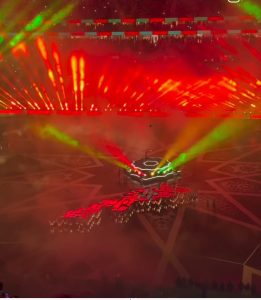
حضي مهاجم فريق الكوكب المراكشي لكرة القدم، مامادو ساماكي، بتكريم من طرف جمعية "آسا للتنمية الرياضية والثقافية"، وذلك على هامش البطولة الرمضانية المنظمة من طرف الجمعية.
وقد تم قبل إنطلاق إحدى المباريات الخميس الماضي، تقديم تذكار للمهاجم المالي، وسط تصفيقات الجماهير الغفيرة التي كانت حاضرة لمتابعة مباريات البطولة.
وقد قدم اللاعب مامادو ساماكي، هذا الموسم مستوى لابأس به خلال مباريات البطولة الإحترافية، إذ هز الشباك في عشر مناسبات، ويعتبر هداف الفريق خلال هذا الموسم.
![]()







